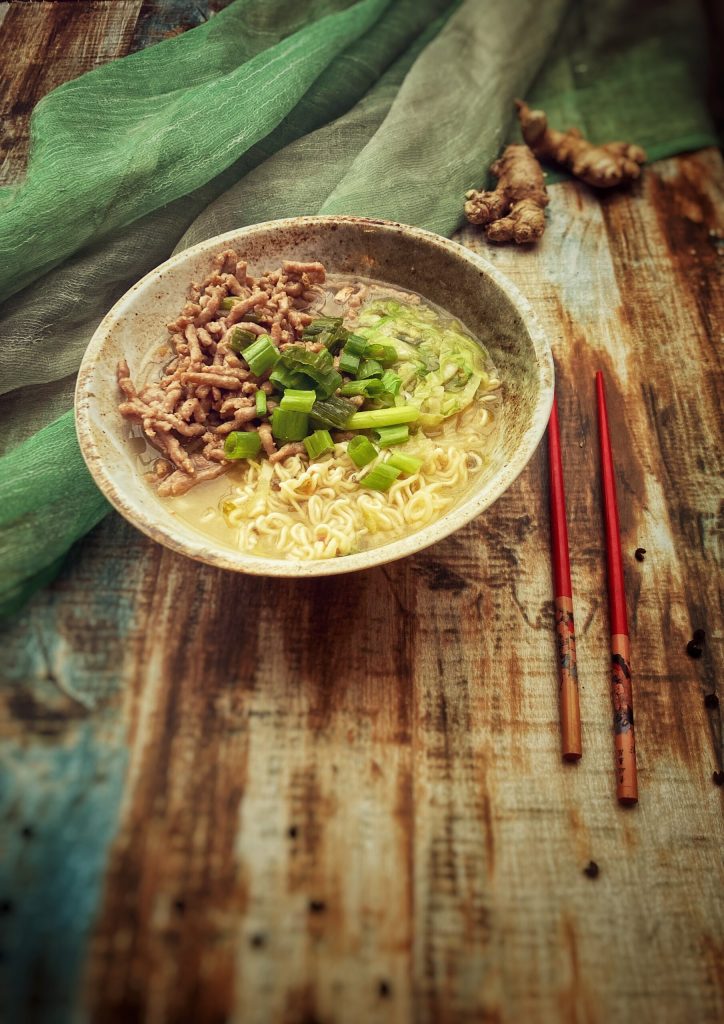The Tantanmen(担々麺)is the Japanese version of Sichuan Dan Dan noodles 🍜.
Both are enriched with minced pork, pak choy, miso and flavored with chili, in Japan with Rayu, a very spicy oil.
The base soup consists of:
torigara, a Japanese-style chicken broth that differs from the Western version because it is made with bones and water; no roots (carrots, parsnip, etc.) or aromatic herbs (bay leaves, parsley, etc.) are added
soy milk, which tempers the spiciness of Rayu;
zasai (a type of marinated mustard stem), Chinese sesame paste called chimajan, mirin, soy sauce or sake, and green onion.
Ramen noodles, preferably fresh.

- Difficulty: Easy
- Cost: Economical
- Preparation time: 10 Minutes
- Portions: 2 people
- Cooking methods: Boiling
- Cuisine: Japanese
- Seasonality: All seasons
Tantanmen Ingredients:
- 2 green onions
- to taste fresh ginger (chopped)
- 10.5 oz minced pork
- 2 cloves garlic
- 1 tbsp miso
- to taste chicken bones
- 10.5 oz pak choy
- 1.7 cups soy milk
- to taste chili
- to taste rayu
- 2 tbsps chimajan (alternatively tahini)
- to taste sesame oil
- 1 tbsp soy sauce
- 2 tbsps mirin
- 2 zasai (optional)
- 8.5 Ramen noodles
Steps
In a pan, sauté the green onion with ginger, garlic (1 clove), and a dash of sesame oil. Add the pork and miso.
Boil the pak choy.
Prepare the torigara broth with chicken bones in 3.4 cups of water, add soy milk, chili, rayu, ginger, and garlic. Boil for at least 40 minutes.
Cook the ramen noodles in the broth, then drain them.
Prepare the bowls with: 1 tbsp chimajan, 1/2 tbsp soy sauce, 1 tbsp mirin, and some sesame oil.
Add the broth, then the ramen noodles.
Finally, add the pork, pak choy, optional zasai, and the chopped green part of the green onion.
Serve hot.

Differences with Dan Dan Noodles:
* Chinese Dan Dan Noodles also include Sichuan peppercorns.
The Tantanmen has a less intense broth, creamier and more similar to a soup.
Affiliate link #adv:
You can purchase the ramen noodles ready-made online too.

